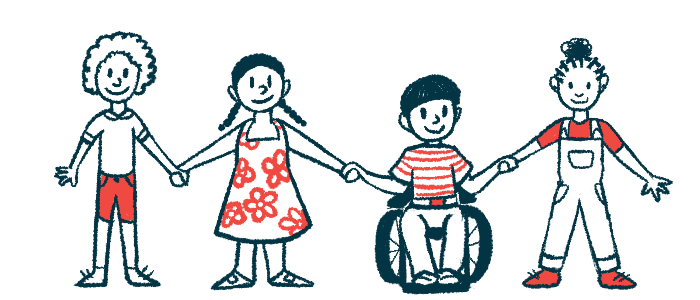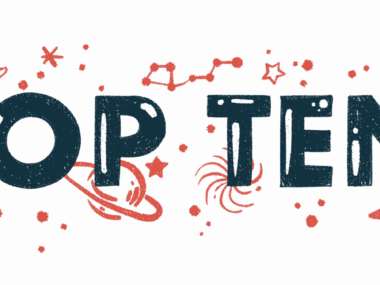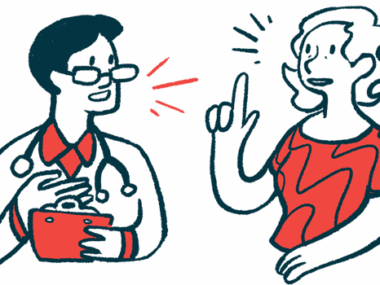SMA treatment Zolgensma seen to benefit patients in real world
Children with 4 or more SMN2 gene copies achieved better motor function
Written by |

Treatment with Zolgensma (onasemnogene abeparvovec-xioi) improves motor function in children with spinal muscular atrophy (SMA) who carry at least four copies of the so-called backup SMN2 gene, according to real-world data from the RESTORE patient registry.
SMA children treated with the approved gene therapy achieved several motor milestones at ages within or close to the expected timeframe for healthy children. Among these milestones were sitting without support, standing with assistance, and standing alone. The treated patients also “remained free from nutritional or ventilatory support following [Zolgensma] treatment,” the researchers noted.
Further, reported adverse events were consistent with the therapy’s known safety profile.
These real-world data “indicate favorable safety and effectiveness of [Zolgensma] gene replacement therapy in clinical practice in the United States and Israel for children with four or more SMN2 gene copies treated after newborn screening,” the researchers wrote.
The study, “Outcomes for patients in the RESTORE registry with spinal muscular atrophy and four or more SMN2 gene copies treated with onasemnogene abeparvovec,” was published in the European Journal of Paediatric Neurology.
Investigating children with at least 4 SMN2 copies given gene therapy
SMA is caused by mutations in both copies of the SMN1 gene, which result in low to no production of the SMN protein. This leads to the degeneration of specialized nerve cells responsible for movement control.
The disease’s severity is influenced by the number of copies a patient has of SMN2, a gene also able to produce SMN but to a lesser extent. SMN2 only partly compensates for the faulty SMN1 gene, but carrying more SMN2 gene copies is associated with an older age of onset and less severe disease.
Novartis’ Zolgensma is a one-time gene therapy that delivers a healthy copy of the SMN1 gene to cells. It’s approved for children younger than age 2 in the U.S., and for those of any age weighing up to 21 kg (about 46 pounds) in the European Union and Canada.
Clinical trials in patients with up to three SMN2 copies have demonstrated the gene therapy’s ability to improve motor function, preserve feeding and breathing abilities, and prolong survival.
Given that SMA patients with four or more copies may have received Zolgensma treatment in real-world settings, an international team of researchers now set out to investigate the therapy’s impact on this subgroup of patients.
The team analyzed data from 19 children — more than half of them boys — meeting these criteria, who were participating in RESTORE (NCT04174157), a real-world, observational SMA patient registry tracking treatment patterns and outcomes for up to 15 years.
One patient lived in Israel, while the remaining 18 lived in the U.S. A total of 12 children (63.2%) had four SMN2 copies, and seven (36.8%) had more than four. All were identified by newborn screening and had no symptoms at diagnosis.
The children received Zolgensma at ages ranging from 1 to 11 months, and were followed for a median of 15.4 months, or slightly longer than one year. The longest follow-up was more than three years.
New motor milestones seen for these SMA children with Zolgensma treatment
Motor milestones were recorded for seven children with four SMN2 copies and five with more copies. The median age at the last recorded milestone was 14.6 months, or just longer than one year, and up to about two years.
All 12 children achieved new motor milestones, and none lost previously gained milestones. For two-thirds of the children, new motor milestones were achieved only after receiving Zolgensma.
In particular, the two youngest children, at a median age of 4.1 months, could hold their heads up. Six infants could roll over, and four children were able to sit independently. Most children with follow-up data until an older age became able to stand or walk alone.
“Patients achieved milestones of sitting without support, standing with assistance, and standing alone at ages within or close to the appropriate age ranges for these milestones,” as defined by the World Health Organization, the researchers wrote.
This was in contrast with the known natural disease course of untreated SMA patients with four SMN2 copies. Most such patients develop symptoms before age 3 and are unable to achieve certain milestones.
Motor function was assessed with the Children’s Hospital of Philadelphia Infant Test of Neuromuscular Disorders (CHOP-INTEND), the Hammersmith Infant Neurological Examination-2 (HINE-2), and/or the Hammersmith Functional Motor Scale Expanded (HFMSE).
Clinically meaningful improvements were defined as an increase of four or more points for CHOP INTEND, three or more for HFMSE, and two or more points with HINE-2.
No serious adverse effects deemed related to Zolegensma SMA treatment
Seven of the 13 children with available CHOP-INTEND scores either maintained or achieved a maximum score of 64 points, the data showed. Among the four children with at least one assessment after treatment, one maintained a maximum score, and three showed clinically meaningful improvements, with scores increasing between eight and 18 points.
HFMSE scores were recorded in six children, with one achieving a score of 63 points but none achieving the maximum score of 66. Three of the seven children with available HINE-2 scores reached the maximum of 26, while one showed a clinically meaningful score improvement from zero to six.
Children with four or more SMN2 copies … achieved or maintained motor milestones, attained improvements in motor function, and remained free from nutritional or ventilatory support following [Zolgensma] treatment.
Five children (26.3%) experienced one or more adverse events. No serious adverse events were deemed related to treatment, there were no deaths, and none of the children needed ventilation or nutritional support.
Four children (21%) had an elevation in liver enzymes, a sign of liver injury and a known side effect of Zolgensma, but there were no signs of acute liver failure or serious liver injury.
“Children with four or more SMN2 copies … achieved or maintained motor milestones, attained improvements in motor function, and remained free from nutritional or ventilatory support following [Zolgensma] treatment,” the researchers wrote.
“Ongoing follow-up of these patients will provide extended long-term data on the effectiveness and safety of gene replacement therapy for SMA in this understudied patient population,” the team concluded.









